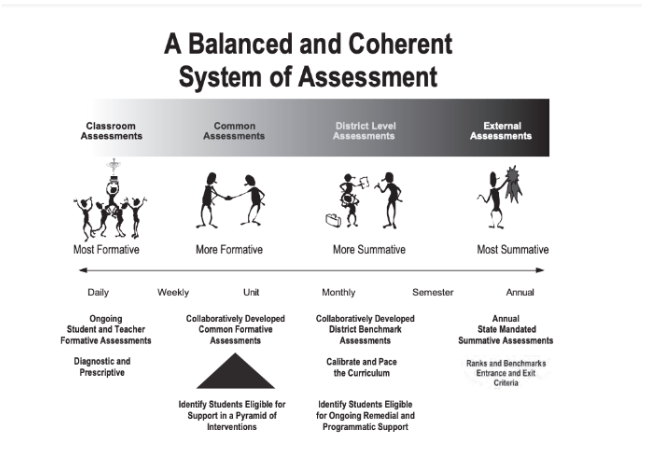Learning Assessments at DMC
August 25, 2023
Heather Nerem, Head of Academics
As we begin the 23-24 school year, we remain committed to the right work of a Christian Professional Learning Community (CPLC). Christ is all and in all (Colossians 3:1-17) is our overarching focus as a CPLC and is a reflection of our mission to equip minds and nurture hearts to impact the world for Christ. We aim to bridge academics with discipleship.
In Christian education, our goal is to see lives transformed with the gospel AND for our students to have the wisdom, knowledge, critical thinking skills and communication skills to be in the world, but not of the world. This goal means we must have an intentional focus on academics and spiritual formation. In both areas, we have four questions that we reflect upon to ensure student learning.
- What do we want students to learn? (Curriculum & Essential Learnings)
- How do we know they have learned it? (Assessment)
- How will we respond when they don’t learn it? (Instruction)
- How will we respond when they already know it? (Instruction)
Last year we focused heavily on question one, as we began the work to get extremely clear on what we want students to learn by outlining our essential learnings of each course. We are continuing this work during our 23-24 school year. We are also focusing on question two, which relates to assessment.
At Des Moines Christian, we value a balanced and coherent system of assessment. We know and understand the importance in using a variety of different assessments, each with their own purpose, as shown in the chart below.

As we reviewed our system of assessments, we recognized that our system could be strengthened. One area that we are focused on strengthening is our formative assessments, which are depicted on the left side of the chart above. Formative assessment is an assessment done during the instructional process for the purpose of improving teaching or learning (Black & William, 2003). What makes formative assessment formative is that it is immediately used by teachers to make adjustments to their instruction that will help students learn the lesson better. Equipping teachers in formative assessment is a commitment that we have at Des Moines Christian.
We also decided to strengthen our external assessments, which are shown on the right side of the chart. This led to the decision to administer the Star Reading and Star Math assessment in grades K-12 this school year. In the past, we have administered Star testing through eighth grade. This will allow us to have a more comprehensive and clearer picture of student growth over time, as well as allow us to examine the effectiveness of our curriculum and instruction across all grades.
Question: What are Star Assessments & When are they Given?
- Star Assessments are short computer-adaptive tests for K—12 students that measure reading, math, and early literacy skills. Star tests are computer adaptive, which means they adjust to each answer your child provides. This helps teachers get the best data to help your child in the shortest amount of testing time (about one-third of the time other tests take).
- Star is given four times throughout the year in elementary and three times in middle school and high school. The first round of testing for all levels will start as early as August 28th and move through September 15th.
Question: Why do we use Star Assessments?
- Star assessments allow us to see curricular gaps to improve our overall content and instruction, ensuring our curriculum is guaranteed and viable.
- Star assessments allow us to look at student needs and growth. Teachers analyze the data they get from Star Assessments to monitor student growth, to determine which students may need additional instruction, and/or to determine which students need enrichment. These are not used in determining one’s grades.
- When we analyze the assessments, our goal is for students to be at the 50% proficiency level and above. While in some schools, the proficiency level is set at the 40% proficiency level, we have chosen the 50% level. We chose this for two reasons:
- We feel extremely confident that a child scoring at the 50% proficiency level is equipped for grade level material or beyond.
- It allows us to intervene earlier if a child may need additional support. We desire to be proactive versus reactive in a child’s learning.
Overall, I am excited for the assessment shifts we are making. We will continually examine our system of assessment in order to ensure our approach is best for student learning. If you have any questions about assessment, feel free to contact me directly at hnerem@dmcs.org.